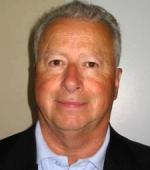Requisite Organization in the Passport Office
Video of a world conference presentation in 2005 and it's transcript
Summary
Robert Macphee discussed the transformation of the Canadian Passport Office, a part of foreign affairs and international trade, into a special operating agency. With 550 employees and a $50 million budget, the office faced a government mandate to operate more like a business. This led to a reevaluation of their business processes and organizational structure. Macphee noted variations in management styles across the 26 national offices, from hands-on to isolated approaches. A study by Capelle Associates revealed the need for structural changes, including reducing layers of management and redefining roles. The supervisor role was shifted from management to a lead hand position, addressing fragmented processes and accountability issues. Implementation involved sharing study results with all levels, redefining roles, and establishing an accountability framework. This restructuring led to improved efficiency, clearer worker direction, and better customer service. Macphee affirmed the positive impact of these changes and the importance of adaptability in organizational evolution.
Transcript is not available
Country
Canada
Date
2005
Duration
17:16
Language
English
Organization
Canadian Passport Office
Video category
Major organizations and consulting firms that provide Requisite Organization-based services

A global association of academics, managers, and consultants that focuses on spreading RO implementation practices and encouraging their use
Dr. Gerry Kraines, the firms principal, combines Harry Levinson's leadership frameworks with Elliott Jaques's Requisite Organization. He worked closely with Jaques over many years, has trained more managers in these methods than anyone else in the field, and has developed a comprehensive RO-based software for client firms.





